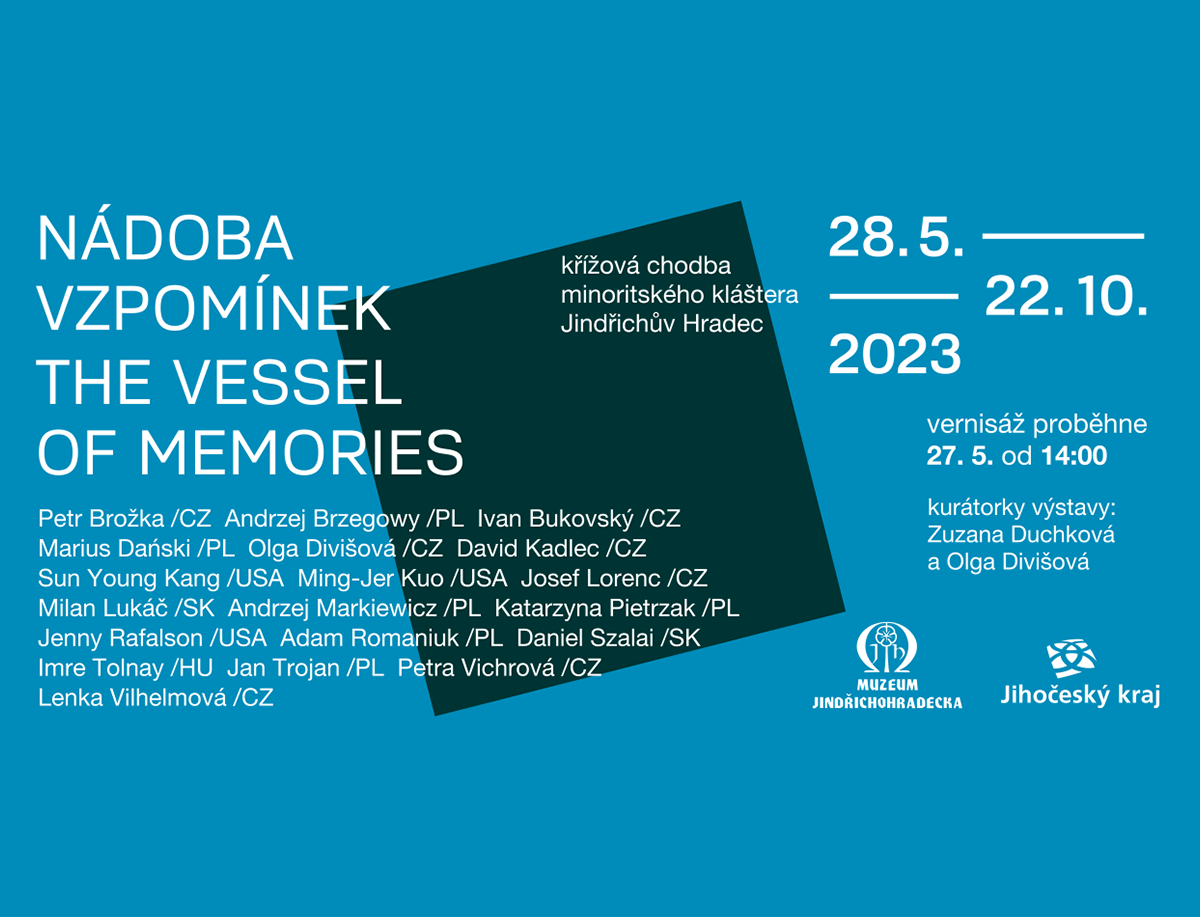
About event
Nádoba vzpomínek / The Vessel of Memories
Petr Brožka, Andrzej Brzegowy, Ivan Bukovský, Marius Dański, Olga Divišová, David Kadlec, Sun Young Kang, Ming-Jer Kuo, Josef Lorenc, Milan Lukáč, Andrzej Markiewicz, Katarzyna Pietrzak, Jenny Rafalson, Adam Romaniuk, Daniel Szalai, Imre Tolnay, Jan Trojan, Petra Vichrová, Lenka Vilhelmová
CZ/ HU/ PL / SK/ USA
Place of the event: Muzeum Jindřichohradecka, https://www.mjh.cz/
Date of the event: 28. 5. – 22. 10. 2023
Curators: Zuzana Duchková, Olga Divišová
The exhibition entitled The Vessel of Memories presents mainly large-format works of various techniques (painting, drawing, graphic art, spatial design, photography) by artists of many nationalities (Czech, Hungarian, Slovak, Polish, South Korean, Taiwanese, Ukrainian/Israeli) and from various countries (CZ, HU, PL, SK, USA), who focus on themes related to human history and memory in their work.
In most of the works, the viewer could look for different parables of the cycle of life with all its positive and negative sides. The Vessel of Memories is a little different for each of the artists, yet they intersect or complement each other in certain motifs. As a vessel, one may understand not only concrete bodies of various kinds, which may be empty or with different contents, but also the human body itself, which becomes a container for memories that are never an exact representation of reality, but on the contrary include forgetting and a certain specific emotional state. Therefore, many of the presented works are very intimate confessions of each of the artists, and many of them emphasise that their creation itself was a certain purifying process, whether leading to a coming to terms with and remembering their own ancestors, their childhood, specific life events, or a process leading to more general themes of a general perception of humanity, human history and human artefacts, which persist and associate new and new ideas and memories.
One of the strong themes that runs throughout the exhibition is related to human memory, whether in the form of human remains (I. Bukovský), which are an important link between our past, present and future and can alert us to the many injustices and the subsequent punishments we must pay for them. Human memory is very much mirrored in the motifs of heads (L. Vilhelmová), which are either solitary or in some interaction with each other, intertwining, interconnecting and trying to capture mental drives and physical transformations in time and space (A. Romaniuk, A. Markiewicz, K. Pietrzak). Consciously and unconsciously, they 'meet and struggle' with their own history and the history of human existence as a part of nature, which, despite certain interventions, can still renew itself (D. Szalai), but is also capable of being a very harsh judge of the human race (J. Lorenc, M. Lukáč).
Other distinctive lines that run through the presented works include encounters with the un/finality of man, with the theme of death and its legacy among the living through dedicated places such as cemeteries, which often become unnoticed yet important aspects of big city life (M.-J. Kuo). However, they can also be objects – vessels that relate to certain memories of ancestors who have passed away and for whom they were an important memento (J. Rafalson), or that have become a symbol of a certain period of recent human history associated with a global threat and in which they acted as ‘trophies’ (O. Divišová). The very shape of the simplest vessel – its round or elliptical rim – preserves the presence of the infinite in the finite and captures the atmosphere left to us by vanished generations (I. Tolnay). Even the contents placed in vessels can offer a deep reflection on the life cycle, for example in the form of slowly fading flowers (P. Vichrová).
Memories of ancestors are also a strong theme presented by the artists in this exhibition. Often the works are conceived as a personal testimony about the closest people who have already left this world and have left behind a number of memories, whether in the form of diaries, whose text has become a kind of silent ritual rebirth of the deceased (S. Y. Kang) or, on the contrary, the artist delves into his or her own inner self and records all the associations he or she recalls with the persons in question, reaching the limit of the ‘legibility’ of his or her own memories (D. Kadlec).
Some of the artists give the viewer himself a large space to develop his own observations, thoughts, feelings and sensations, letting the very space of the painting stand out, the apparent monochromaticity (M. Dański), the power of lines that create pulsating structures and rise into space (A. Brzegowy) or take inspiration from the world of geometry with reference to the real world of things (J. Trojan). An important role can also be played by the absorption in colour, a colour stain that co-creates the inner memory world of the artist (P. Brožka).
All of these themes form a whole that offers new stories about the life cycles of individuals and the whole human community, in which more and more vessels of memories can emerge.
Zuzana Duchková
Powered by iCagenda